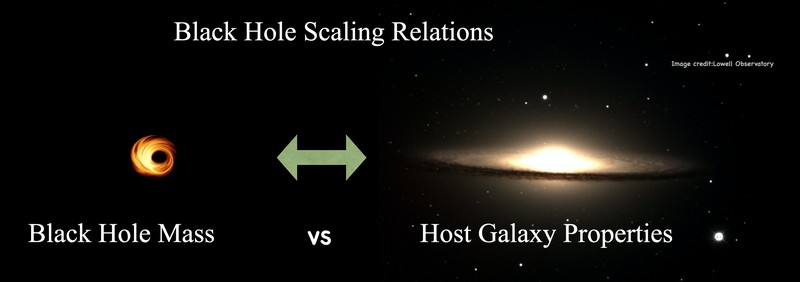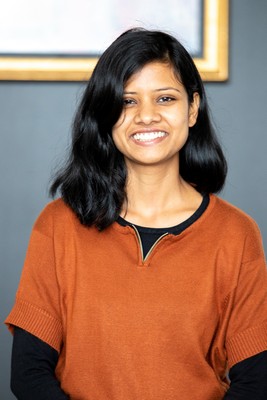Sidebar
Events Calendar
From Scaling Black Holes to Measuring Dark Matter in Galaxies

The supermassive black hole residing at the galaxy center is expected to co-evolve with the host galaxy. An evidence of this co-evolution is the relation observed between supermassive black hole mass and the host galaxy properties.
I will talk about the latest supermassive black hole scaling relations that we discovered during my Ph.D. Given our telescopes have a limited resolution, these scaling relations are used to estimate the mass of the black holes at the centers of distant galaxies.
I will also talk about a naturally occurring phenomenon called 'gravitational lensing', which has become a powerful tool for astronomers to measure the 'dark matter' which is invisible but has a mass and constitutes most of the matter in the Universe. I am using the observations of 'gravitational lensing' to measure dark matter in galaxies and trying to understand their role in shaping the galaxy forms that we observe.

Dr Nandini Sahu
I am an ASTRO3D Postdoctoral Fellow at the University of New South Wales (UNSW), Sydney. I fall in the category of an observational extragalactic astrophysicist. Currently, I am studying gravitational lenses and lensed galaxies from the early Universe to further develop our understanding of galaxy formation and evolution. I did my Ph.D. from the Swinburne University of Technology, Melbourne (awarded in April 2022). My Ph.D. thesis titled "Morphology-dependent Black Hole Mass Scaling Relations" presents the latest developments and new correlations between supermassive black hole mass and host galaxy properties. I am originally from India, born and brought up in a small town near Varanasi. Before coming to Australia for my Ph.D. in 2017, I completed my Bachelors's and Masters's degrees in Engineering Physics at the Indian Institute of Technology (BHU) Varanasi.
